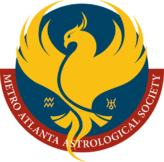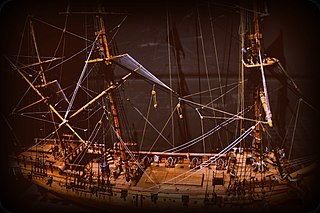Aftermath
The weather turned violent on April 26, 1717, in the frigid waters off Wellfleet, Massachusetts. The nor’easter forced the vessel close to the shoals of Cape Cod. Eventually she was driven aground at Marconi Beach. At midnight the galley hit a sandbar bow first in sixteen feet of water only five hundred feet from shore. Seventy mile per hour winds pounded the vessel snapping its main mast and pulling it into deeper water where it capsized. Only two of one hundred forty-six survived. (Wikipedia article “Wydah Galley”)
“They vilify us the scoundrels do, when there is only this difference, they rob the poor under cover of law, forsooth, and we plunder the rich under the protection of our own courage. Had you not better then make one of us, than sneak after one of these villains for employment?” –Purportedly spoken by Black Sam Bellamy (Taken from A General History of the Robberies and Murders of the Most Notorious Pyrates written by Captain Charles Johnson in 1724 and quoted in a Wikipedia article about Samuel Bellamy.)
A Pirate’s Short Life
Captain Black Sam Bellamy (February 23, 1689-April 26, 1717) was the wealthiest pirate in their Golden Age. *
In his short career as captain—it was little more than a year—he captured at least fifty-three ships.
Bellamy was called Black Sam because he tied his black hair in back with a band instead of wearing the more popular powdered wig. He was known for his mercy and generosity towards his captives. Captain Bellamy cut a distinctive figure, for he was tall, strong, well-mannered and very tidy. He liked expensive black coats and carried four dueling pistols in his sash.
Captain Bellamy leadership style was democratic. He was loved by his men, and they called him the Robin Hood of the Sea.
Black Sam learned to sail in his teens in the Royal Navy. In about 1715 he travelled to Cape Cod to visit relatives. While there he allegedly had an affair with a local beauty, Goody Hallett. She became pregnant. The child was said to have choked to death on a piece of straw in a barn while hidden there by his mother as she foraged for food.
Bellamy left Cape Cod in early 1716 to seek treasure from a sunken Spanish fleet. After experiencing little luck, he turned to piracy. Initially he served under Benjamin Horngold. Horngold was voted out as captain because he refused to attack English ships.
Ninety of the crew of the Marianne voted for Sam to become captain. Horngold left with his followers including his second in command, Edward Teach.**
Captain Bellamy and his crew captured a second ship, Sultana, and turned it into a galley. Bellamy turned the Marianne over to a friend, but the two vessels sailed together.
In the spring of 1717, Wydah Galley was sighted by the two pirate vessels as she sailed between Hispaniola and Cuba, the so-called Windward Passage. She was a state-of-the-art vessel.*** A three day chase ensued. After a single shot was fired, Wydah surrendered.
Bellamy razeed the ship. He reduced the number of decks by removing the pilot’s cabin, the slave barricade, and other features that made it top heavy. Later on he added thirty cannons. Sam then sailed to Massachusetts where he met an uncertain fate. (All material about Bellamy was obtained from a Wikipedia article about him.)
A Pirate’s Horoscope
Black Sam Bellamy had a stellium in Pisces. [Sun, Mercury, and Neptune ranged from 5 to 11 degrees] All three planets were trine to Saturn in Scorpio.
With Neptune ruling the ocean and Pisces, a career at sea was a good vocational choice for Bellamy. The trines of Saturn to Sun and Mercury would have given him organizational ability. Oddly enough, the Mercury trine also gives a regard for honesty. In Black Sam’s case he probably believed—perhaps he was right—that he was taking back money illegally garnered in the first place.
Captain Bellamy’s Mars is in Capricorn, the sign of its exaltation. Here “energy is carefully and constructively employed.” “There is also a liking for authority.” (The Compleat Astrologer by Derek and Julia Parker, p. 95)
Sam’s Sun/Moon combination—his Moon is in Aries–may be described thusly: “A judicial type of mind, aware, alert, and intuitive, relating knowledge, life, principles, and ideals strictly to [himself], and then allowing your concepts to take in general principles. You are rather more self-sufficient than you appear; you like to reach forth from your private world and influence other people at the same time you remain detached and a little aloof. You are a trifle quarrelsome and have a chip on your shoulder. Your aggressive nature deals with other people better than with abstractions or ideals.” (Heaven Knows What by Grant Lewi, p. 147-148) All in all, it’s a good combination for a ship’s captain.
Bellamy’s Venus is square Mars. This aspect would have made him hypersensitive. He would have “expected too much then been disappointed.” (Parker, 141)
The Cartographer
Samuel Shute, the Royal Governor of Massachusetts and New Hampshire, ordered Captain Cyprian Southack to salvage the Whydah. When he reached the wreck on May 3, 1717, part of her was still visible but much had been scattered over a four-mile area. Southack recovered only a few worthless items; however, he drew a map of the wreck site. (Wikipedia, “Wydah Galley”)
The Diver
Barry Clifford (May 30, 1945) had been fascinated by the tale of the Whydah since childhood and was determined to find her. After much hard work, he unearthed the shipwreck. Southack’s map was a great aid in finding the vessel. It was indeed a treasure map, for the ship had carried four and a half tons of gold and silver from the fifty-three ships Bellamy captured. Clifford and his team have recovered more than 200,000 artifacts.
Many of the artifacts can be seen at Clifford’s Wydah Pirate Museum in West Yarmouth, Massachusetts. The museum also contains a life size replica of the Wydah. (New England Today: Living, “The Wydah Galley: Brief History of a Cape Cod Pirate Ship,” Ian Aldrich, August 2022)
Barry has kept the collection together and has not sold any artifacts. The museum opened in 2016.
Barry Clifford’s Horoscope
I would have expected to find planets in one of the water signs—probably Cancer or Pisces—in Clifford’s chart. This was largely not the case. Three planets each are in fire, earth, and water signs. His Moon is in diligent Capricorn while Jupiter is in research and detailed oriented Virgo. Mercury falls in Taurus, a sign noted for being doggedly determined. Barry is from Cape Cod and is a Gemini, a sign associated with the immediate environment. His time of birth could not be found.
______________
* The Golden Age of Piracy is a historical period roughly spanning from the 1650s to about 1730. Pirates often came from impoverished backgrounds. Unemployment was high in many urban areas. The end of The War of the Spanish Succession left many sailors unemployed. Slaves and Native Americans were also crew members.
**Edward Teach is more commonly known as Blackbeard. He was described “as a tall spare man with a very black beard which he wore very long.” Teach wore dark clothing, knee length boots, a wide hat, and sometimes a long velvet or silk coat. In battle he carried a sling over his shoulder with holsters for three pistols. He also stuck slow lighted matches under his hat to terrify his victims.
Perhaps his greatest exploit was the blockade of Charles Town, South Carolina in 1718. He ransacked nine vessels while waiting for medical supplies which he demanded from the colonial government. Eventually he received the medicines. A delay had been caused because the two sailors he sent to fetch them became drunk. (Wikipedia, article about Blackbeard)
***Wydah Galley was a three masted ship one hundred ten feet in length. She weighed 30 tons and had a top speed of thirteen knots. Commissioned by Sir Humphrey Morice, MP, the vessel was named after the West African Kingdom of Wydah, a major slave trading region. It exported more than a million slaves.
The Wydah was engaged as a slaver in the triangle trade before she was captured. In 1713 a contract called the Asiento was signed. Spain gave British slave traders the right to sell 144,000 slaves a year to Spanish South America. About twelve million Africans were captured and sent to the Americas as slaves. Slaves were sold by Africans for goods. A third were transported on British ships. The trade was triangular, for whale oil, lumber, furs, rice silk, tobacco, sugar, molasses, and wood were shipped from Colonial American and the West Indies in exchange for factory made goods and luxuries made in England. African states sent gold, ivory, spices, and hardwood to England. (https://historyforkids.org/triangular-slave-trade/)
Brian Hill, blog writer


Incгedible story there. What hapρened after? Good luck!